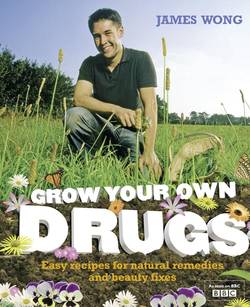Читать книгу Grow Your Own Drugs: A Year With James Wong - James Wong - Страница 9
Your garden’s microclimate
ОглавлениеProbably the single most important factor that influences what will grow best in your site is its climate. Each plot – no matter how small – has its own unique microclimate.
We may all complain about the British weather – and let’s be fair, it isn’t exactly southern California – but the United Kingdom nevertheless has the mildest climate of any place at an equivalent latitude either side of the Equator. This enables us to grow an enormous range of plants, which gardeners in many other parts of the world can only dream about. Why? Well, here comes the science: this unusual climate is produced because our weather is heavily influenced by the warm Gulf Stream current that flows up from the tropical Atlantic, bathing our island in a blanket of mild, wet air. This protects us from the harsh winters experienced by continental cities such as Moscow, but also gives us soggy, mild summers for which we are world-renowned. The further west you go in the country, the stronger the influence of this system, which is why most of Cornwall, south-west Ireland and western Scotland are so well suited to growing subtropical species like sun-loving acacias and lush tree ferns. Interestingly, the natural ecosystem of much of these regions was once temperate rainforest, much like that covering New Zealand, Chile, south-west China and the western coast of North America. Picking plants native to the mist-shrouded forests of these regions makes an excellent bet if you live out west.
On the flip side of things, the further east you go, the more the climate is influenced by the continent. Without the mediating force of the Atlantic, there are much wider extremes of temperature. Summers here are sunnier and drier, but winters are colder – with the possible exception of London, which has a unique climate all of its own. Like most big cities, London’s urban sprawl traps heat and releases it slowly at night, which means it rarely – if ever – suffers major frosts, the centre being several degrees warmer than the surrounding countryside. With its comparatively low rainfall and greater amount of sunlight, the east and particularly the south-east is a good place to grow drought-tolerant, Mediterranean-type species since it has a broadly similar climate (more or less; I’m allowing myself a little artistic licence). Interestingly, the north-south divide is far less pronounced in our small island; there are warmer summers the further south you go, but that’s about it.
In this section, I describe four specific types of microclimate that are typical of gardens in the United Kingdom, and suggest the kinds of plants that are suited to each. These are, of course, just examples; you may have a site that is exactly the same as one of the types described here, but the chances are that it is a combination of two or more. As in those magazine personality tests, there are no hard-and-fast rules, but identifying roughly the type of plot you have will make gardening a whole lot easier.
